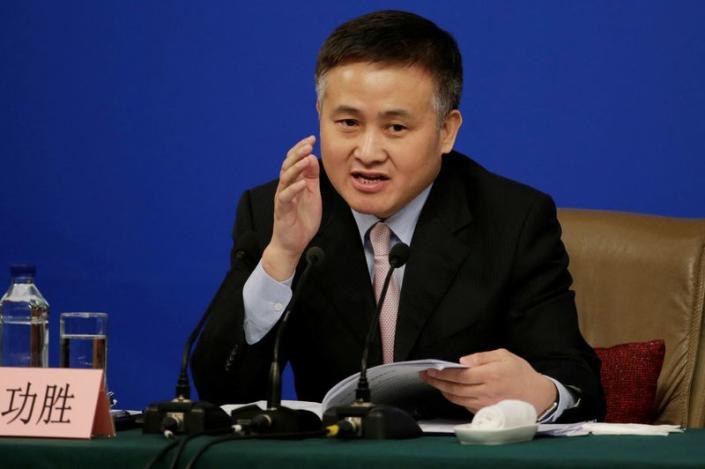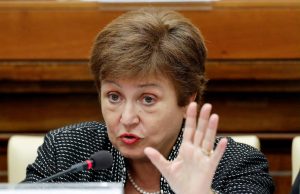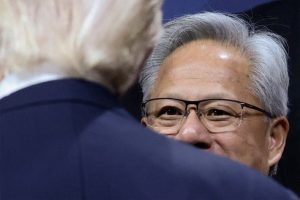China’s central bank announced a raft of measures on Tuesday to stimulate the economy – to prevent a slide into deflation and bolster growth.
The package offered more funding and interest rate cuts, and was broader than expected, but analysts warned that more fiscal help will be needed to get closer to the government’s 5% GDP growth target for this year.
The moves aim to restore confidence in the world’s second-largest economy after a slew of disappointing data raised concerns of a prolonged structural slowdown.
ALSO SEE: China’s PBOC Cuts Short-Term Rate, to Discuss Outlook Tuesday
However, analysts questioned how productive the People’s Bank of China’s liquidity injections would be, given that credit demand from businesses and consumers is extremely weak. They also noted the absence of any policies aimed at supporting real economic activity.
“This is the most significant PBOC stimulus package since the early days of the pandemic,” Capital Economics analyst Julian Evans-Pritchard said.
“But on its own, it may not be enough,” he added, saying more fiscal stimulus may be needed to return growth to a trajectory towards this year’s official target of about 5%.
Stocks, bonds, yuan all rise
Chinese stocks and bonds rallied and Asian stocks hit 2-and-a-half-year highs as Governor Pan Gongsheng announced plans to lower borrowing costs and inject more funds into the economy, as well as to ease households’ mortgage repayment burden. The yuan currency jumped to a 16-month high against the dollar.
Pan told a news conference the central bank will in the near future cut the amount of cash that banks must hold as reserves – known as reserve requirement ratios (RRR) – by 50 basis points (bps), freeing up about 1 trillion yuan ($142 billion) for new lending.
Depending on the market liquidity situation later this year, the RRR may be further lowered by 0.25-0.5 percentage points, Pan said, in rare forward-looking remarks.
The PBOC will also cut the seven-day reverse repo rate, its new benchmark, by 0.2 percentage points to 1.5%, as well as other interest rates.
“The move probably comes a bit too late, but it is better late than never,” Gary Ng, senior economist at Natixis said. “China needs a lower-rate environment to boost confidence.”
Pan did not specify when the moves will take effect.
Moves to boost property sector
The property market support package included a 50 basis points reduction on average interest rates for existing mortgages, and a cut in the minimum downpayment requirement to 15% on all types of homes, among other measures.
China’s property market has been in a severe downturn since peaking in 2021. A string of developers have defaulted, leaving behind large inventories of unwanted apartments and a troubling list of uncompleted projects.
Beijing has removed many home purchase restrictions and sharply lowered mortgage rates and downpayment requirements in response, but has so far failed to revive demand or arrest slumping home prices, which fell at the sharpest pace in more than nine years in August.
The property crisis has weighed heavily on the economy and crippled consumer confidence, given that 70% of household savings are parked in real estate. Analysts remain unconvinced the latest measures will have a significant impact.
“Households who are uncertain over their income prospects in a weak job market may not be willing to take on higher leverage,” Gavekal Dragonomics analysts said in a note on the latest measures.
The PBOC also introduced two new tools to boost the capital market.
The first – a swap programme sized at an initial 500 billion yuan – allows funds, insurers and brokers easier access to funding in order to buy stocks; and the second provides up to 300 billion yuan in cheap PBOC loans to commercial banks to help them fund other entities’ share purchases and buybacks.
‘Far from a bazooka’
August economic data broadly missed expectations, adding urgency for policymakers to roll out more support.
On the fiscal side, local governments have been quickening bond issuance to help fund infrastructure projects, but analysts say more may be needed.
“An aggressive fiscal policy is required to inject genuine economic demand,” ANZ analysts said in a note on the PBOC moves, which they described as “far from being a bazooka.”
Investment banks including Goldman Sachs, Nomura, UBS and Bank of America have recently cut their 2024 growth forecasts.
China’s latest measures come after the US Federal Reserve last week delivered a hefty rate cut, allowing the PBOC to ease monetary conditions without putting too much pressure on the yuan.
“There is still room for further easing in the months ahead,” said Lynn Song, chief economist for greater China at ING.
“If we see a large fiscal policy push as well, momentum could recover heading into the fourth quarter.”
- Reuters with additional editing by Jim Pollard
ALSO SEE:
US Plan to Ban Chinese Tech in Vehicles on American Roads
US May Sanction China’s DRAM Chip Giants Next, Analyst Warns
Lithium Battery Supply Chains Blighted by Labour Abuses – WA
US Pressing Korean Chipmakers For More China Chip Curbs
Big US Banks Cut China Growth Outlook Amid Industrial Slowdown
US House Passes Bill to Limit China’s Access to EV Tax Credits
China Will Favour Developers Who Help the Masses: Minister
























